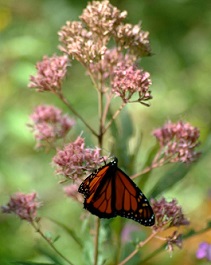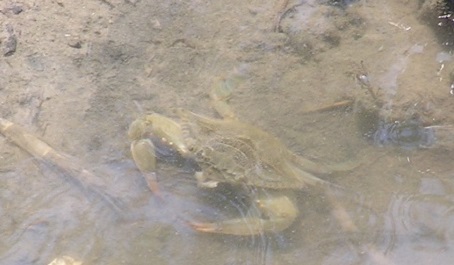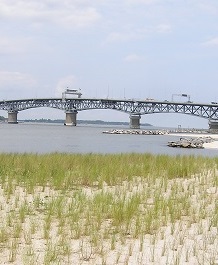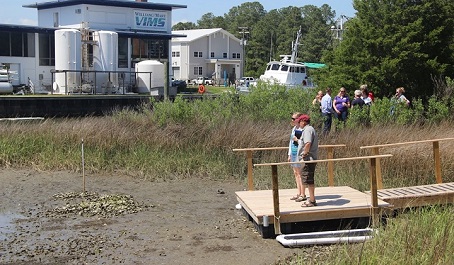Carl Hershner Teaching Marsh
A one-acre tidal wetland demonstration area in Gloucester Point, Virginia managed by the VIMS Center for Coastal Resources Management
Discover coastal wetlands and their valuable ecosystem services at this outdoor classroom.
Flood ProtectionTidal wetlands reduce the rate of surface water flow and temporarily store flood waters like a sponge. Wetlands receive stormwater runoff and release it gradually. They change sharp runoff peaks and discharge water flows over longer periods of time thus reducing the danger of flooding and also recharging groundwater supplies. |
Shoreline Erosion ProtectionThe dense stems, roots, and rhizomes of tidal wetland plants buffer the adjacent shoreline by reducing wave energy and reducing current velocity thereby trapping sediments. |
Water Quality ImprovementJust like nature's kidneys, tidal wetlands filter and trap sediments and pollutants, increase dissolved oxygen levels, and reduce nutrient levels. As water flow is slowed over the marsh, sediments and chemicals drop out of the water column, high rates of productivity lead to high rates of mineral uptake, and decomposition processes take place in wetland sediments. |
Seafood ProductionThe wetland ecosystem provides food sources for a variety of fish, shellfish, birds, amphibians, reptiles, and small mammals. Decaying plant matter (detritus) is colonized by microorganisms which are then consumed by larger aquatic animals. Some wetland-dependent fish and wildlife are harvested commercially which supports the local seafood economy. |
Teaching Marsh habitats include riparian buffer, salt marsh, oyster reef, mud flat, and shallow water. Many plants, fish, crabs, birds and other wildlife are living here.
Located in the York River floodplain, the Teaching Marsh experiences coastal storms, flooding, sea- level rise, and stormwater runoff. Water levels have increased noticeably since construction 20 years ago.




